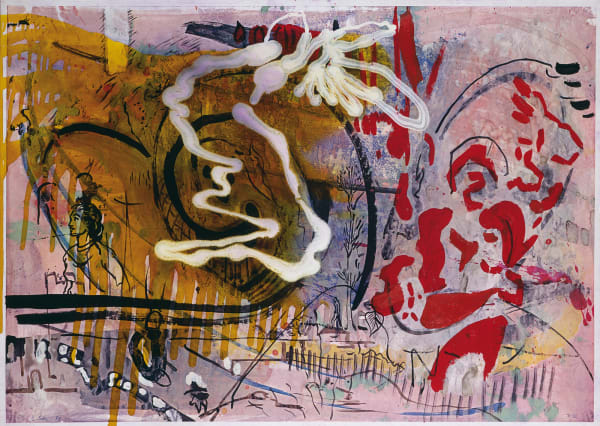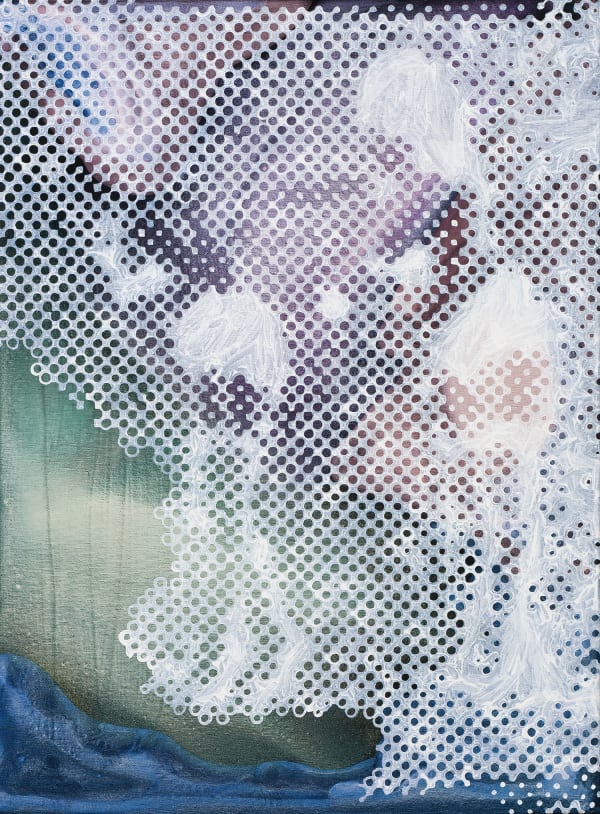SIGMAR POLKE German, 1941-2010
"I am married to many dots. I want all the dots to be happy. The dots are my brothers. I am also a dot."
Sigmar Polke was an influential German artist whose inventive paintings and photographs used non-traditional materials, like meteorite dust or detergent. The artist's wry probing of aesthetic taste is evinced in his work Alice im Wunderland (Alice in Wonderland) (1972), a painting layered with irony, psychological states, and fiction. “There has to be an element in of risk-taking for me in my work,” he once stated. Born on February 13, 1941 in Oels, Poland in the midst of World War II, he and his family were expelled to communist East Germany after the war. Growing up in the German Democratic Republic left a lasting impact on the artist, specifically the sensorial overload of consumer culture he felt after moving to West Germany in 1953. While studying at the Kunstakademie Düsseldorf, Polke, Gerhard Richter, and Konrad Lueg, created what is now known as the Capitalist Realism. Together, these artists responded to the nationalistic themes of Socialist Realism, while also critiquing West Germany’s burgeoning consumer society. Polke’s work went on to have a profound impact on a generation of young American artists, including Julian Schnabel and David Salle. He died on June 10, 2010 in Cologne, Germany at the age of 69. Today, Polke’s works are included in the collections of the Art Institute of Chicago, The Museum of Modern Art in New York, the Tate Gallery in London, the Kunstmuseum Bonn, and the J. Paul Getty Museum in Los Angeles, among others.
-
 SIGMAR POLKEUntitled (Mönchengladbach), 1984Offset print on cardboard, painted over with synthetic resin varnish after own gouache65 x 92 cm
SIGMAR POLKEUntitled (Mönchengladbach), 1984Offset print on cardboard, painted over with synthetic resin varnish after own gouache65 x 92 cm
25 5/8 x 36 1/4 in -
 SIGMAR POLKEUntitled (Mönchengladbach), 1984Offset print on cardboard, painted over with synthetic resin varnish after own gouache65 x 92 cm
SIGMAR POLKEUntitled (Mönchengladbach), 1984Offset print on cardboard, painted over with synthetic resin varnish after own gouache65 x 92 cm
25 5/8 x 36 1/4 in -
 SIGMAR POLKEUntitled , 2003Acrylic and interference paint on canvas80 x 60 cm
SIGMAR POLKEUntitled , 2003Acrylic and interference paint on canvas80 x 60 cm
31 1/2 x 23 5/8 in





